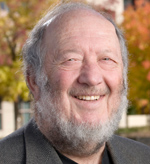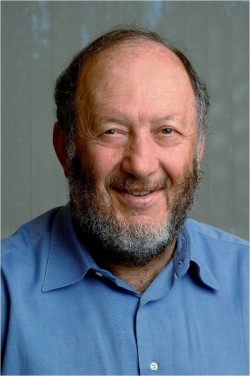Aging stem cells may explain higher prevalence of leukemia, infections among elderly, study shows
Aging stem cells may explain higher prevalence of leukemia, infections among elderly, study shows
Human stem cells aren’t immune to the aging process, according to scientists at the Stanford University School of Medicine. The researchers studied hematopoietic stem cells, which create the cells that comprise the blood and immune system. Understanding when and how these stem cells begin to falter as the years pass may explain why some diseases, such as acute myeloid leukemia, increase in prevalence with age, and also why elderly people tend to be more vulnerable to infections such as colds and the flu.
“We know that immune system function seems to decline with increasing age,” said Wendy Pang, MD. “This is the first study comparing the function and gene expression profiles of young and old purified, human hematopoietic stem cells, and it tells us that these clinical changes can be traced back to stem cell function.”
Specifically, the researchers found that hematopoietic stem cells from healthy people over age 65 make fewer lymphocytes — cells responsible for mounting an immune response to viruses and bacteria — than stem cells from healthy people between ages 20 and 35. (The cells were isolated from bone marrow samples.) Instead, elderly hematopoietic stem cells, or HSCs, have a tendency to be biased in their production of another type of white blood cell called a myeloid cell. This bias may explain why older people are more likely than younger people to develop myeloid malignancies.
The study was published online Nov. 28 in the Proceedings of the National Academy of Sciences. Pang, who is in the Medical Science Training Program at Stanford, is the first author of the research; professor of pathology Irving Weissman, MD, is the senior author. Weissman is also the director of Stanford’s Institute for Stem Cell Biology and Regenerative Medicine.
Pang began the study to understand whether human HSCs aged like mouse HSCs. Previous studies had shown that mouse HSCs change in number and function as a laboratory mouse grows older. She obtained HSCs from 15 healthy elderly people and 28 healthy young people and compared their prevalence, distribution and cell cycle profile.
She found that HSCs comprised a greater proportion of bone marrow cells in older people than in younger people. They were also more likely to be actively dividing than younger HSCs. But their greater numbers and increased proliferation didn’t translate into greater efficiency; like a top wobbling out of control as its rotation slows, the aging HSCs instead appear to be unsuccessfully trying to keep up with the demands of everyday life.
When Pang purified the HSCs and grew them in laboratory dishes, she found that HSCs from older people were less able to differentiate into B lymphocytes and more likely to become myeloid cells. Furthermore, immune-deficient laboratory mice given transplants of older, human HSCs exhibited a higher proportion of myeloid to lymphoid cells in their bone marrow in the weeks to months after the transplant.
Finally, Pang examined the gene expression profile of the two sets of human HSCs, as well as five samples of HSCs from people ages 42 to 61. She found that HSCs from elderly donors express comparatively higher levels of several age-related genes associated with the cell cycle, proliferation and development, as well as genes associated with DNA repair and cell death. The higher levels of these genes suggests the cells are less likely to wait quietly on the sidelines until new blood or immune cells are needed and are instead entering the cell cycle inappropriately.
Overall, the results mirror those seen in studies of HSCs from laboratory mice of varying ages. They suggest that human HSCs struggle as a person ages, and that this struggle can sometimes lead not only to inadequate immune responses, but also to inappropriate growth and specific types of blood cancers, such as acute myeloid leukemia. They also contribute valuable information for the study of many other conditions.
“In both mice and humans, the puzzle has been how the system ages,” said Weissman, who is also the Virginia & D.K. Ludwig Professor for Clinical Investigation in Cancer Research and a member of Stanford’s Cancer Institute. “Because HSCs in old mice and humans are derived from the HSCs they had in their youth, there are two possibilities to describe how these differences occur. Either individual, young HSCs change their gene expression patterns as they age, undergoing heritable adaptations that favor the myeloid lineage, or each young HSC already has a specific lineage bias and is battling for precious niches through the natural selection of aging, which favors those biased toward myeloid cells.” Understanding which possibility is true could help clinicians of the future encourage the survival of HSCs with more-appropriate properties in patients with age-related diseases, Weissman believes.
“These findings will also serve as an important baseline for future studies of age-related diseases, such as myeloid dysplastic syndrome, anemia and leukemia,” said Pang. “Now that we know how HSCs change and function in elderly individuals who are not ill, we should be able to tease out disease-associated changes from normal age-associated phenomena.”
In addition to Pang and Weissman, other Stanford researchers involved in the study include assistant professor of medicine Elizabeth Price, MD; instructor of pathology Debashis Sahoo, PhD; professor of orthopedic surgery William Maloney, MD; and professor of medicine Stanley Schrier, MD.
The research was supported by the Stanford Medical Scientist Training Program, the Siebel Stem Cell Institute, the Thomas and Stacey Siebel Foundation and the National Institutes of Health. Information about Stanford’s Department of Pathology, in which the research was conducted, is available at http://pathology.stanford.edu.
Irving Weissman, MD.
Professor, Pathology – Stem Cell Institute
Member, Bio-X
Member, Cancer Center
Professor, Developmental Biology
Professor (By courtesy), Biology (School of Humanities and Sciences)
> Administrative Appointments
Director, Institute of Stem Cell Biology and Regenerative Medicine, Stanford University School of Medicine (2003 – present)
> Honors and Awards
Passano Award, The Passano Foundation (2009)
Rosentiel Award, Brandeis University (2009)
Fellow, American Association for the Advancement of Science (2008)
Robert Koch Award, Koch Foundation (2008)
Honoree of the Arthritis Foundation of Northern California Chapter’s 2007 Tribute Dinner, Arthritis Foundation (2007)
I & H Wachter Award, I & H Wachter Foundation (2007)
Honorary Doctorate, Mount Sinai School of Medicine (2007)
John Scott Award, City of Philadelphia (2006)
American-Italian Cancer Foundation Prize for Scientific Excellence in Medicine, American-Italian Cancer Foundation (2006)
Honorary Doctorate, Columbia University (2006)
The Commonwealth Club of California 18th Annual Distinguished Citizen Award, Commonwealth Club of California (2006)
Jeffrey Modell “Dare to Dream” Award, Jeffrey Modell Foundation (2005)
The Linus Pauling Medal for Outstanding Contributions to Science, Stanford University (2005)
Rabbi Shai Shacknai Memorial Prize in Immunology and Cancer Research, The Lautenberg Center for General and Tumor Immunology (2004)
Medal for Distinguished Contributions to Biomedical Research, New York Academy of Medicine (2004)
Alan Cranston Awardee, Alliance for Aging Research (2004)
Jessie Stevenson Kovalenko Medal, National Academy of Sciences Council (2004)
Bass Award, Society of Neurological Surgeons (2003)
Award for Outstanding Contribution to Cancer Biology, Pasarow Foundation (1989)
Election to the Institute of Medicine, National Academy of Sciences (1989)
> Professional Education
MD: Stanford University, Medicine (1965)
BS: Montana State College, Pre-med (1961)
> Graduate & Fellowship Program Affiliations
Cancer Biology
Developmental Biology
Immunology
> Current Research Interests
Irving L. Weissman’s research encompasses the phylogeny and developmental biology of the cells that make up the blood-forming and immune systems. His laboratory identified and isolated the blood-forming stem cell from mice, and has defined, by lineage analysis, the stages of development between the stem cells and mature progeny (granulocytes, macrophages, etc.). This required developing and cloning stromal cells of the hematolymphoid microenvironmentsfrom the bone marrow for myeloid and B cells, and from the thymus for T cells. While the adhesion molecules and factors from these stromal cells proved important as molecules (and the genes that encode them) for myeloid and B cells, the analysis of T cell development required in vivo studies of thymic development. In addition, the Weissman laboratory has pioneered the study of the genes and proteins involved in cell adhesion events required for lymphocyte homing to lymphoid organs in vivo, either as a normal function or as events involved in malignant leukemic metastases.
The Weissman laboratory also has a small group at Hopkins Marine Station, where they have developed a model organism for laboratory and field study of allorecognitionthe invertebrate counterpart of transplantation immunity. Working with the protochordate Botryllus schlosseri (which has a chordate larval stage and an invertebrate adult form) they have identified a single major gene locus that governs rapid allorecognition, and 2-3 other loci involved in delayed allorecognition events. They are using this model to study the genes, proteins, and cells that govern protochordate allorecognition, and the effects of these genes on their population dynamics in the field.
###
* Stanford University Medical Center integrates research, medical education and patient care at its three institutions – Stanford University School of Medicine, Stanford Hospital & Clinics and Lucile Packard Children’s Hospital.
** The above story is adapted from materials provided by Stanford University School of Medicine
________________________________________________________________





















